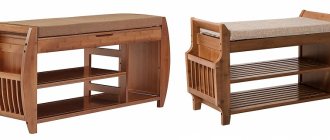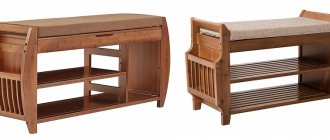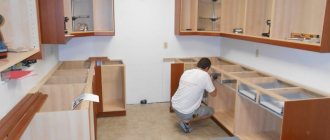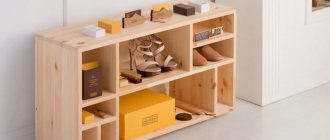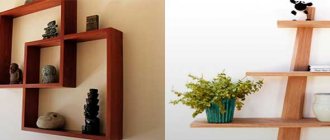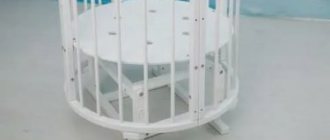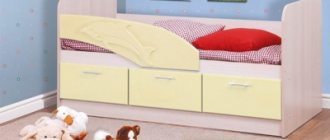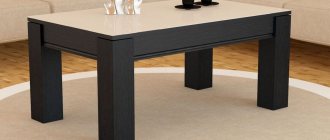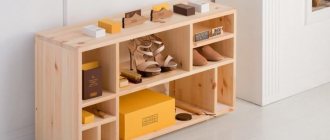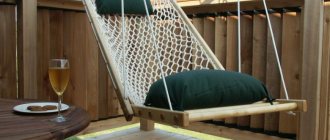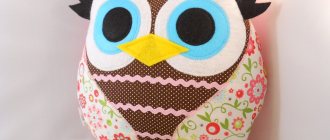What a wide variety of shoes in stores and markets! The female half cannot resist buying new shoes to go with a new dress. For men there is a choice of practical shoes and there are a lot of them too. How much inconvenience do shoes cause in the hallway? Where should I store all this at home?
The solution can be found in a furniture store, namely, buy a shoe rack or make it yourself.
Some people have a small apartment and a narrow small hallway, while others have a spacious house. Some live with adult children and grandchildren, while others live alone. Hallways, like families, are different, so standard pieces of furniture do not always suit a specific room. A comfortable shoe rack, created with your own hands, will help solve the problem of choice.
With it, your hallway will be transformed into a stylish and comfortable calling card of your home.
Types of shoe racks
How to choose the right thing? First, let's get acquainted with the types of furniture such as shoe racks.
It is very convenient in small rooms, as the doors move apart and can be combined with the main wardrobe for clothes.
- Showcase-rack with doors.
You can place shelves along the entire wall, any size of shelves, but the disadvantage of such a shoe rack is instability.
- Slim-format cabinet.
This cabinet has hinged doors at an angle of 45-90 degrees. And the name speaks for itself. This type of furniture is “thin”; shoes will be located at a slope.
Tall over-the-knee shoes may become deformed on such shelves.
- Galoshnitsa.
More suitable for a balcony. Shoes dry quickly on such shelves, but they are inconvenient to store.
- Rack.
It is the simplest design, but unstable and unaesthetic for the hallway.
- Cabinet-cabinet.
The most common and practical shoe rack.
- With tenacity;
- M multifunctionality;
- Compactness;
- E aesthetic.
A closed shoe rack is suitable for people with pets. It will help protect your shoes from any damage from pets.
For the cabinet you can make folding, sliding or regular doors. So it will take up little space. A shoe rack made from laminated chipboard will be durable and will not fail for a long time.
Wooden models are easy to make with your own hands, which saves the family budget.
Shelves and drawers in the closet can be made to suit any type and size of shoes. And on top there is the opportunity to make a table or cover it with fabric, a shoe rack with a seat in the hallway will come out.
Types of materials that can be used for shoe racks:
This shoe rack has excellent ventilation, which allows you to dry your shoes well.
The main advantages of using such chests of drawers: practicality, lightness of design, attractive price.
Such chests of drawers always look representative and elegant in the hallway, creating coziness and harmony in it.
MDF cabinets have a three-component advantage: price, quality, attractiveness.
Metal and wood make the cabinet heavier; shoes in plastic will not breathe. MDF is a good choice, but not cheap. The most suitable material for storing shoes is chipboard. Does not weigh down the shoe rack and is easy to assemble.
Today it is the most popular material in the shoe furniture segment.
And so, let's focus on a cabinet cabinet made of chipboard. The tools we need are:
- R Uletka;
- K ductor;
- D rel;
- Hammer;
- With a verlo for confirmations.
Tools for making a shoe rack with your own hands.
What materials are shoe racks made from?
We'll look at all the options, some are easy to handle, while others require specialized skills and equipment.
- Wooden. This means not only natural boards, but also plywood, OSB, fiberboard, chipboard - all materials containing wood. Advantages: manufacturability and beauty. All types of shoe racks can be made from wooden materials, from the simplest and cheapest to completely exclusive options. The disadvantage is that such materials are susceptible to dampness, and shoes are often wet. During manufacture, be sure to provide openings to ensure effective natural ventilation. Another problem concerns only natural wood - it must be constantly looked after, otherwise the appearance will quickly deteriorate its original characteristics.
Options for wooden shoe racks
Metal shoe racks are no less diverse
Open shelves or doors of shoe cabinets are made from glass
The article will provide detailed instructions for making shoe racks of varying complexity; choose a model that you can make.
Lightweight cardboard shoe rack
Preparation of parts
- To simplify the work, you can order ready-made parts for the screed in the store. You need to decide where the shoe rack will stand.
- Take measurements of the cabinet in terms of width, length and height.
- Then create a drawing that should show the number and size of shelves, taking into account the thickness of the chipboard.
When ordering, choose the color according to your taste..
You will also need confirmations, adjustable legs, shelf holders, metal corners, drawer guides, canopies and furniture handles.
Parts for assembling a shoe rack.
Instructions for assembling a shoe rack with your own hands
- All dimensions are indicated on the drawing for a clear design of the cabinet.
- Drill the necessary holes in all parts, attach metal corners and secure the guides for the drawers.
- Collect the screed for confirmations.
Typically, the front section below the doors in cabinets and cabinets is for decorative purposes only. Here this panel plays an important role, providing strict geometry and rigidity of the structure.
The main thing when assembling is to leave a space in front for the doors.
Chipboard thickness + Width of the planned shelf + Half the thickness of the chipboard.
For example, a part is 12mm, shelf width is 300. It turns out: 12+300+6=318mm.
We do this from the right and left edges. Transfer the drawing directly to the inside of the chipboard and sign each detail where it will be located. Then you won’t confuse anything during assembly.
Features of assembling racks and cabinets for storing shoes
The assembly rules are not particularly different from other cases, but for shoes it is necessary to provide optimal section sizes. If shelves are made, then in any case they cannot be filled to the top. And if the modules are planned to be square, it is advisable that large shoes be placed there in at least three levels. There should be a total of 10 cm left from the edges of the surface to the shoes on both sides so that nothing falls. Otherwise, the design process is no different from other situations. It should be carried out in a well-lit room. First you need a drawing, and then holes for fasteners are drilled using it. Then the metal corners are fixed. It is advisable to make cabinets without ordinary drawers, but with special folding doors (up, down, to the side). Accordingly, the pattern of the guides will be different. All fastenings of the cabinet/rack must withstand the load from a large number of shoes.
Assembling a shoe rack according to a drawing with your own hands
When all the holes are made, you can begin assembling the confirmat. We attach the middle posts to the bottom part, then the outer ones. Make sure there are no protrusions at the corner joints. We attach the lids to the corners, put the shelves on the holders and install the finished drawers on the guides.
We attach furniture handles to the doors in any location. They can also be attached to awnings, or you can install sliding ones.
Decorating a homemade shoe rack can be varied.
- At the cabinet, you can make shelves on the left and right sides of different heights from several racks to store shoes of any height and season.
The choice of a shoe stand for the hallway should be made taking into account the style of the room and the overall color scheme in it.
Shoe racks in oak or beech shades harmonize well with light walls and furniture in cherry or alder shades.
In a hallway made in modern or high-tech style, furniture with metal inserts and plastic monochrome facades will look good.
Hand-made furniture always distinguishes the interior from other apartments where there are typical chests of drawers and wardrobes.
Watch a video about making a shoe rack
I would like to draw your attention to the fact that mechanisms can be different, they can differ greatly in their sizes, and the dimensions mentioned in this video relate specifically to my case, but I think that anyone, based on the general principles of assembly, will be able to adjust this additive scheme to any size of their mechanism and a closet.
It is important to remember that this mechanism provides for an internal, rather than overhead, arrangement of the cabinet facade.
In my case, the place for installing the shoe rack mechanism was the lower part of the cabinet, which has an internal width of 600 mm, a height of 365 mm and a depth of 250 mm.
I’ll say right away that my version is made for slippers, but for boots, even size 41, the space of 365 mm in height is not enough, be sure to take into account the required height of the internal space when designing a shoe rack.
This cabinet will have facades made of aluminum frame profiles filled with MDF, therefore, in order not to attach the plastic sides of the shoe rack to the aluminum profile, it was decided to make a false facade from plywood, on which the cabinet facade will subsequently be attached.
This option will allow me to accurately install the facade after installing the drawer, eliminating all inaccuracies and deviations in the gaps, and they can easily exist, since this shoe rack mechanism does not imply adjustment at all.
VIDEO: DIY shoe cabinet.
Very often, the layout of the apartment does not allow installing a full-fledged shoe closet in the hallway. As a rule, the corridors are very narrow and it is not possible to install wide chests of drawers.
The furniture market offers a huge selection of various ready-made shoe racks and chests of drawers, but they are not always suitable in size, color and design.
A good alternative to a storage system in this case is a shoe rack with built-in shoe racks.
There are one-, two- and three-section systems. Depending on the number of sections, the number of shoes that will fit in the finished product changes. The depth of the shoe rack may also change.
Today we invite you to consider the process of manufacturing and assembling a two-section shoe rack, the dimensions of which are: 1100*700*250 (W*H*D). And using this material, you can easily make such a shoe rack with your own hands at home.
Master Class
Below you will find instructions for making a shoe rack with your own hands from wood.
Preparation of the drawing
First of all, you need to decide on the dimensions and design. The tiered design depends on the number of people expected to use it. It is also worth considering how many shoes a person owns.
The width of the shoe shelf is selected based on the available free space in the hallway or the dimensions of the rest of the furniture. As for the design solution of the shoe rack, it is important that it matches the design style of the vestibule.
Preparation of material
The type of tree does not matter. The recommended thickness of the boards is 1.5 - 2 cm. After the issue with the material has been resolved, you need to use a saw or jigsaw to cut out the shelf parts in accordance with the prepared drawing. Then you need to carefully sand all the workpieces.
Painting elements
Before starting paint and varnish work, you should make sure that the planned artistic finishing is completed. The chosen color should be in harmony with the overall style of the corridor. Therefore, it is best to use the same paint as for the hanger. An alternative could be stain. Varnishing is also acceptable.
Preliminary preparation for installation
Before you start assembling the structure, you need to make all the necessary holes at the connection points of the parts.
Necessary materials
The materials for making shoe racks can be:
As for plywood, it is certainly one of the most durable materials for making furniture. However, it requires additional processing and painting.
MDF is also highly durable. Its dense structure facilitates the process of drilling and assembling the product. But, often, if you make a shoe rack entirely from MDF, the product turns out to be quite heavy and expensive. Therefore, only facades are usually made from MDF, and the entire body is assembled from chipboard.
When ordering cutting and lamination of MDF, you can additionally choose milling on the plate, that is, using special milling equipment, a relief pattern will be applied to the parts. It will add a special style to your shoe rack.
In this material we will look at the manufacture of overshoes from a chipboard slab with a thickness of 16 mm - for the frame, and 10 mm - for the internal partitions of the overshoes. This material is one of the most budget-friendly on the market.
Due to the fact that chipboards have a wide range of colors, you can choose the color you like most or choose a decor that best matches the rest of the furniture in your home.
Our design involves the use of two colors: dark wenge (for the roof, sides, internal pillar and bottom) and light wenge (for the facades).
Edging parts
At home, it is possible to veneer only with a paper edge, because for a plastic edge you need a special machine and glue , which, when heated to high temperatures, ensures good adhesion of the edge to the part.
It is recommended to cover visible parts with a thick PVC edge, that is, 2 mm thick. The visible details, in our case, are:
All internal parts and partitions in overshoes can also be covered with PVC edges, but with a thickness of 0.5 mm. You will need to hand over the detailing to the furniture shop craftsmen, which will also indicate how to veneer the parts.
Detailing
Shoe cabinet parts
Details chipboard 16 mm, color: dark wenge:
- 1100*250 – roof/bottom, 2 pcs.
- 668*250 – sidewalls and internal stand, 3 pcs.
- 526*250 – internal horizontal shelves, 2 pcs.
Details chipboard 16 mm, color: light wenge:
Details chipboard 10 mm, color: light wenge:
- 510*140 – internal partitions for shoe boots – 4 pcs.
- 510*135 - internal partitions for shoe boots - 4 pcs.
- 510*85 - internal partitions for shoe boots - 4 pcs.
Fibreboard part 3 mm, color: white:
- 696*1096 – back wall – 1 pc.
Accessories for shoe racks
- Shoes - 4 sets. These are plastic sandwiches for the sidewalls, each set contains two pieces, size: 192*287*85*16;
- Handles – 4 pcs;
- Thrust bearings – 6 pcs.;
- Self-tapping screws;
- Confirmations
- Double-sided tape (for mounting facades).
Necessary tool
- Screwdriver;
- Screwdriver, tape measure, square;
- Confirmation bat;
- Screw bit;
- Drill for confirmations;
- Awl.
Assembling a shoe rack
First of all, we assemble the frame of the shoe rack, four main parts - two sidewalls, a roof and a bottom. The box itself can be assembled at:
- Confirmats - here you will see the stubs from them,
- Minifixes - the process of installing an eccentric coupler is described in more detail in the article Installing a furniture eccentric,
- Furniture metal corners.
It's up to you to decide what will be easiest for you. I would still recommend minifixes.
After we assemble the box, we can install the internal parts.
The easiest way to screw them to the sidewalls and bottom is with confirmations, and to the roof and between each other in the center - with metal corners.
The final work on the frame will be the installation of the fiberboard back wall. In principle, nothing complicated should arise here.
It should be remembered that when installing the back wall of fiberboard, you should always have a perfect square/rectangle with even diagonals
Installation of shoe boots
Now we will need to install the mechanisms for the shoe rack. They are attached to the sides. Below are the installation dimensions and mounting drawings of these mechanisms:
To make it easier to figure out the installation dimensions and easier to install the opening mechanism for our shoe rack, you can use the drawings below.
On the sidewalls you need to mark the attachment points for the rotation axis and the stop pin, and you can immediately screw the panels to the sidewalls.
Our shoe shoe has a standard size: 192*287*85*16 . First, make markings for future fastening of the plastic part according to the above drawing and installation diagram (for each shoe shoe, the kit always includes a drawing and a wiring diagram for its installation, according to which, in fact, the installation should be carried out).
First of all, the shoe shoe needs to be screwed to the sidewalls of the chipboard using self-tapping screws. In this case, pay attention to the fact that the shoe shoe should tilt freely and return to its original position.
Now you need to connect the parts made of chipboard (the shoe shoe itself), the thickness of which is 10 mm, and the plastic parts of the shoe shoe.
Do this in stages. That is, first you insert the parts into special grooves and screw them with self-tapping screws to the left side panel, then to the internal vertical partition. After that, repeat these steps with the back of the partition and the right side.
At the next stage, all we have to do is install the facades, handles and thrust bearings.
For more precise installation of facades, you can use double-sided tape. Those. The fronts here can be installed in the same way as on a regular drawer.
We glue double-sided tape onto the shoe shoe, try on the facade, press it and screw it.
Please note: in our detailing, the dimensions of the facades for cutting and edging are already indicated with the necessary indents and gaps of 2 mm on each side. Also, based on the installation drawing of the shoe shoe, the gap of the facade from below should be at least 7 mm.
That is, step by step, we have:
- The height of the opening for the facade is 326 mm.,
- height of the facade in detail 311 mm.,
- when we glue the edge to the facade, we will add 2 mm on each side - it will already be 315 mm,
- you will also need 2 mm for the gap,
- As a result, in an opening with a height of 326 mm there will be a facade with a height of 315 mm (2 mm each for the gap at the top and bottom, plus an additional gap of 7 mm at the bottom).
How to make pull-out sections for shoes in a closet yourself
Periodic attempts to get rid of the clutter in the lower compartments of cabinets consistently fail. A permanent mess does not give you a chance in this unequal struggle. It seems like just yesterday the shelves were put in perfect order, but a week later it takes an inadmissibly long time to find the right thing. It seems that the wardrobe lives its own life, which is not subject to the will of its owners. The situation can quickly be changed in your favor if you integrate retractable storage systems into the furniture. Some of them can be done with your own hands.
Why do we need retractable storage systems?
The main reason for clutter on the lower shelves of any cabinet furniture is difficult access to the compartments. This is especially true for areas located near the rear walls. In order to extract something from there, you often have to remove things located in the first rows, bend down or even kneel down and get to the desired item on the Nth attempt. This unpleasant procedure is very familiar to each of us. As a result, the lower compartments are used extremely irrationally. To solve the problem, it is enough to install retractable storage systems in these areas:
- shoe racks;
- boxes;
- baskets.
Thanks to their use, everything stored on the lower levels becomes freely accessible in a matter of seconds. To get the right thing, you don't need to take anything out or rearrange objects. All contents of retractable systems are in the free access zone.
Why is it recommended to install shoe racks at the bottom of cabinets?
Shoes for everyday wear are traditionally stored on the lower shelves in most cases. Almost all factory storage systems (folding and sliding) are designed for installation in close proximity to the bottom of the cabinet. This does not mean that all the lower compartments of a multi-door wardrobe need to be filled with shoe racks. It is enough to select one section.
What is a homemade shoe rack?
Homemade shoe shelves have a simple design. Most of all, they resemble roll-out shelves for computer desks. The main difference is the presence of a handle-side in the front plane and a rubber mat. Such shoe racks can be installed from 3 to 5 pieces in one compartment.
Pros of homemade shoe racks
The main advantage of self-made sliding structures is that they can be adapted to the characteristics of a particular wardrobe and provide maximum capacity. In addition, there are several more arguments in favor of homemade shoe racks:
- they can be quickly installed without altering the cabinet body;
- during the installation process, it is not necessary to remove things stored in it from the cabinet;
- Suitable for storing unwashed shoes.
Factory retractable models may not be suitable for the width or depth of the internal compartment in the cabinet. Therefore, when choosing them, buyers give preference to models with smaller sizes. As a result, empty areas remain at the bottom of the cabinet. Folding shoe racks are easier to adapt to the size of the compartment. However, their installation process is quite labor-intensive, and besides, they are designed for storing clean, dry shoes.
Tools and materials for making retractable shoe racks
You can make and install retractable shoe shelves using a drill or a screwdriver and a confirmation drill. You will also need:
- ;; (can be purchased separately or in a set with attachments); (or a screwdriver and a confirmation key);
- awl.
Such a set of tools is available in almost every home. To get spare parts for assembling the shoe rack, you will have to go to the nearest furniture components store. To make retractable shelves you will need:
- guides;
- railing handles;
- laminated chipboard parts;
- confirmations;
- self-tapping screws 3.5×16 and 3.5×30 mm;
- rubber anti-slip mat for drawers.
When choosing components, it is advisable to adhere to several recommendations. Then retractable shoe racks will be easy to use and fit into the design of the closet.
Tool
It is advisable for novice craftsmen to choose a screwdriver for drilling and assembling shelves. It is more convenient than a drill, which is better used by professionals in such situations.
Guides
The best option is full extension ball guides with a closer. They can be replaced with full extension roller models, but this is pointless. At approximately the same cost, roller guides are inferior to ball guides in terms of performance characteristics:
- load capacity;
- smooth ride;
- silent extension.
However, in most cases, conventional partial extension roller guides are chosen to equip pull-out shelves. The example shows an installation with these mechanisms. In general, they cope with the load and work for a long time, but shoe racks on ball guides with closers are much more convenient to use.
Railing handles
The length of the handles must be selected so that it matches the width of the shelf as much as possible. In this case, the front fittings will look great on the structure and will serve as limiting edges. The optimal decor for such roof rails is glossy chrome. It matches the coating on the hanger rods in the closet.
Anti-slip mats
When purchasing rugs, you need to pay attention to the length and width of the roll. These parameters should be such as to ensure a minimum amount of trimming. Rugs can be bought not only in furniture stores, but also in regular supermarkets.
In most cases, cutting shelves does not require a whole sheet of laminated board, so you will have to be content with the leftovers that the company can offer. The laminated chipboard decor does not have to be the same color as the laminated coating of the compartment body. It can be matched to the color of the fiberboard back walls or facades. Any of the above combinations will be appropriate. Moreover, the visible side will be covered with anti-slip mats, so only the sides and edged ends will be visible.
What to consider when designing a shoe rack
The width of each façade is slightly larger than that of half, a third or a quarter of the doorway (depending on the number of sliding panels). This is explained by the design features of the wardrobe. The vertical profile handles of adjacent facades overlap each other, so the overall width of the panels is increased.
When a wardrobe is made to order, the compartments in which the sliding systems are planned to be installed are made a little narrower. Thanks to this slight shift, drawers, baskets, and shoe racks do not rest against the door leaf when pulled out. The stand, slightly moved from the center, moves the retractable systems a couple of centimeters away from the facade, thanks to which the systems function without problems.
In factory and some custom models, internal vertical partitions symmetrically separate the body opening. So that the retractable structures of such models do not cling to the facades. They need to be moved a little to the side. This can be done using spacer strips that need to be screwed to the internal vertical post. Such components are purchased ready-made or cut from laminated chipboard. Most often the second option is used.
How to correctly calculate the size of a shoe rack
The dimensions of the roll-out shelf depend on the depth of the cabinet and the width of the niche. All tolerances are the same, so the calculations are not difficult:
- shelf width - 100 mm must be subtracted from the total depth of the cabinet (sliding systems take up as much space as possible);
- shelf length - from the width of the niche you need to subtract the tolerance for the guides (25 mm) and the thickness of the spacer strip made of laminated chipboard (18 mm);
- length of the side sides - subtract 30 mm from the width of the roll-out shelf;
- length of the rear side - 32 mm must be subtracted from the length of the shelf if the thickness of the chipboard is 16 mm, and 36 mm if a board with a thickness of 18 mm is used;
- The height of the sides is the same and is 60 mm (it is advisable to make the rear side 1 mm lower so that in case of small discrepancies it does not protrude beyond the side rails).
When performing calculations, it is important to choose the correct length of the guides, the pitch of which is 50 mm. There are no guides with a length of 470 or 390 mm. There are 450 or 400 mm models. This must be taken into account when making calculations. Moreover, the shelf can be longer than the guides, but the guides are longer than the shelf - not.
Drilling, assembly and installation of shoe racks
Integrating roll-out shelves with sides into a cabinet is no different from the process of manufacturing any other cabinet furniture from laminated chipboard. It consists of marking, drilling, assembly and installation. The sequence of actions should be as follows:
- Use a corner and a tape measure to mark the shelves in which you will need to drill through holes. On the sides it is enough to make 2 entry points, and at the back it is better to tighten the longest side with 3 confirmations. Prick the marked points with an awl; this will prevent the drill from moving to the side when entering the body of the slab.
Hinged cabinets can be upgraded in the same way. Only in this case, the spacer strips must be screwed not to the internal partition, but to the side post. Otherwise, the racks will rest against the open door.
Shoe rack drawing
You can download the assembly drawing of this shoe rack using this link:
Now all the shoes in your hallway will be in their places, while the folding mechanism will not interfere with free movement in the hallway.
If the dimensions of this shoe rack do not suit you, you can proportionally reduce or increase all the dimensions of the parts, having previously calculated how much space is needed to fit all the shoes.
Indexed html links, end-to-end placement, prominent places in the top.
Basic types of shoe rack installation
The cabinet type is a free-standing model. Their key advantage is mobility. Shoe racks can be moved between different places and rooms when the need arises. If such house structures are absent in principle, this will cause great inconvenience over time. The built-in option is divided into several subtypes. The main ones are: structures built into other furniture and located in a niche on the wall. The second type of installation significantly saves space. The corresponding models are produced mainly to order. Built-in shoe racks hide some shortcomings: unevenness, unused elements. The rotating type of installation involves the arrangement of compartments around the circumference of a rotating drum. This is a very practical option that has found its connoisseurs. In addition to free-standing designs, it is often used in cabinets, having different configurations and sizes.
